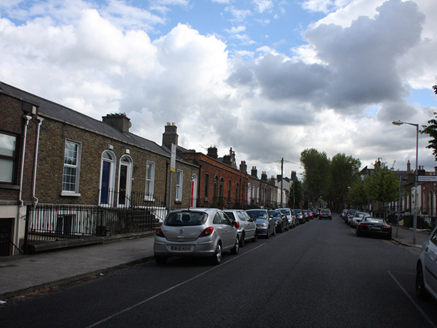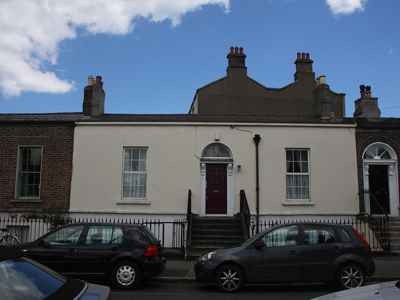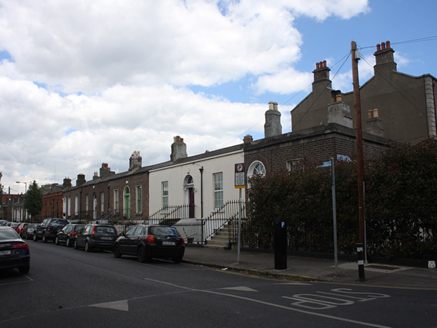Survey Data
Reg No
50110312
Rating
Regional
Categories of Special Interest
Architectural, Artistic
Original Use
House
In Use As
House
Date
1855 - 1875
Coordinates
315511, 232938
Date Recorded
19/05/2017
Date Updated
--/--/--
Description
Terraced three-bay single-storey house over basement, built c. 1865, as one of terrace of five. Pitched slate roof with terracotta ridge tiles, partly hidden behind rendered parapet. Rendered chimneystacks having clay pots. Cast-iron rainwater goods. Lined-and-ruled rendered walls and cut granite plinth. Square-headed window openings with granite sills and replacement windows. Elliptical-headed door opening to front, having doorcase comprising panelled pilasters having scrolled consoles supporting carved cornice, leaded spoked fanlight and timber panelled door. Granite steps with remains of bootscrape to platform. Cast-iron railings on rendered plinth wall. Square-headed door opening having timber door to basement. Cast-iron gate and matching railings on granite plinth wall enclosing basement area.
Appraisal
This attractive house is enhanced by the retention of historic fabric such as the classically-influenced doorcase. The fenestration rhythm creates a pleasing balance to the façade, and the composition maintains the roof-line of its neighbouring houses, contributing to a sense of uniformity. In 1847, Synge Street was largely undeveloped. However, construction accelerated from this period onwards due to the demand for suburban housing. Synge Street forms part of an early Victorian neighbourhood situated west of Camden Street. It began to be developed when P. Monks built there in the 1850s, and many of the street's houses were built in the 1860s.





